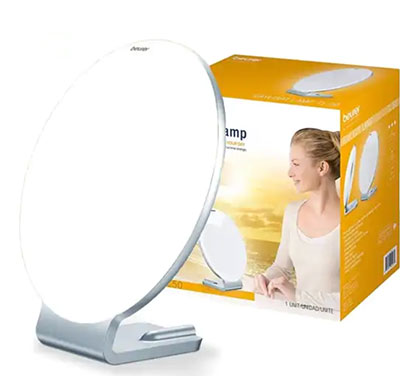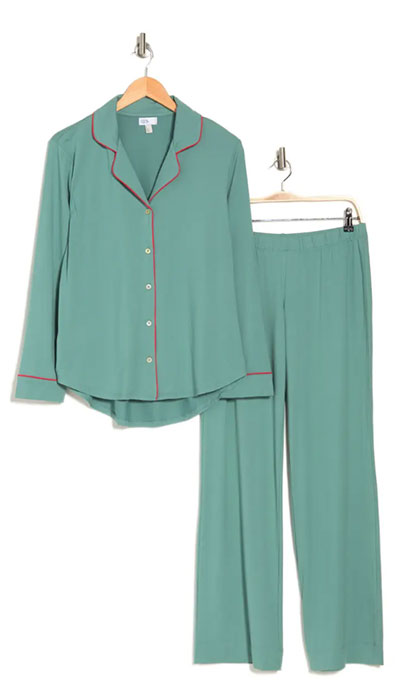Disclosure: The items below to help you survive the gloomiest time of year contain affiliate links, which means we’ll receive a commission if you click on a link. We hope you like our picks – click or tap the titles to shop!
If shorter days and lack of sun seem to zap your energy and make you feel down, you’re not alone. Whether you’re just getting a touch of the winter blues or perhaps even suffer from Seasonal Affective Disorder (SAD), the winter months can be a challenging time to get through. But like I mentioned, you’re not unique in feeling this way. In fact, in the United States alone, about 5% of adults experience SAD and it typically lasts about 40% of the year. The good news is that there are ways to mitigate the symptoms that come along with feeling down in the during the colder months. We’ve rounded up 10 tips to help you survive the gloomiest time of the year. Check them out below!
1. Stay Active
Whether you suffer from SAD or not, getting and staying active is so important for your overall mental health and wellbeing. As it does with other forms of depression, exercise is a natural antidepressant. It releases feel-good endorphins and other brain chemicals that enhance your sense of wellbeing. Try just 30-minutes of exercise 3-5x a week or even just 10-15 minutes daily, and I bet you’ll see a difference!
2. Take Vitamin Supplements
Having a vitamin D deficiency can certainly be a risk factor for depressive symptoms. Having a low amount of this vitamin is generally caused via diet or not enough sunlight exposure. While experts can conclude that vitamin D supplements can totally relieve symptoms of SAD, ensuring that you’re getting enough sunlight during the day and incorporating vitamin D-rich foods in your diet may help. Because vitamin D can regulate serotonin levels in your body (a crucial neurotransmitter for mood stabilization), making sure you’re getting the appropriate amounts via natural sources or supplements can possibly help ease symptoms. However, please ensure you talk to a medical professional prior to incorporating any type of supplement into your routine – you don’t want to overdue it!
3. Incorporate Light Therapy into Your Routine
Light therapy can be an excellent option to start incorporating into your daily routine. Getting in the proper amount of Vitamin D, the vitamin manufactured by your body after being exposed to sun, is linked to helping fight depression and increasing happiness. Phototherapy boxes have become more and more popular in recent years. Typically, sitting in front of the light box for 20 to 30 minutes in the first hour of waking up can result in a chemical change in your brain that boosts your mood and can help alleviate symptoms of SAD. Not sure where to get a phototherapy box? Don’t worry, we have you covered.
Overstock.com.,Beurer Circular Light Therapy Lamp, $103.71 $74.69
Zulily, Beurer White TL20 LED Daylight Therapy Lamp, $49.99 $29.99
4. Get Outside
By now, you should probably start to see a pattern of the need to move your body and get the proper amount of exposure to sunlight in order to help mitigate the symptoms of SAD or winter blues. Studies have shown that spending more time outside during the winter months could in fact, be very beneficial for people with SAD. In one case, a 20-minute walk outside resulted in better mood, increased self-esteem, happiness, and reduced depression symptoms.
5. Ensure Proper Nutrition
Besides activity, ensuring you’re getting proper nutrition through the winter months can really help your mood. Of the many neurotransmitters, the few that affect appetite also affect mood, like serotonin, dopamine, and norepinephrine. Therefore, if you’re feeling depressed, this could lead to an increased amount of comfort eating or picking foods that may not be the best, nutritionally. In order to help regulate these neurotransmitters, try avoiding foods high in sugar, and focus on foods higher in fiber, protein, and starchy veggies.
6. Wake Up Earlier
Don’t have the time to sit in front of a lamp in the mornings? No worries. Dawn simulators are an alternative which have actually been shown to be as effective as light therapy for people with mild SAD. These devices are alarm clocks, but rather than actually waking you up with the abrupt beeping or music, they produce light that gradually increases in intensity, just like the sun naturally does. The best type of dawn simulators are ones that use full-spectrum light, which is as closet to natural sunlight as we can get.
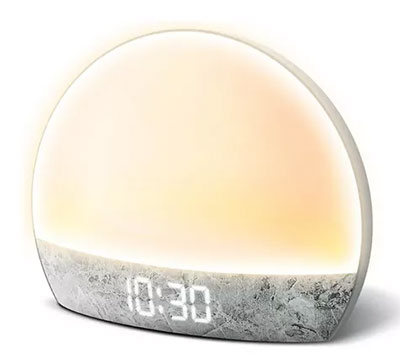
belk, Lomi Sunrise Alarm Clock, White, $99.99 $59.99
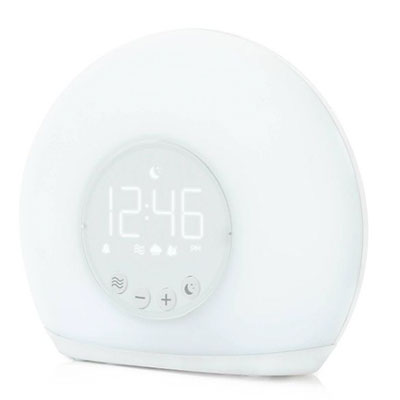
Target, Moon Glow Alarm with Sunrise Wakeup, $30
7. Create (& Stick!) to a Routine
Having trouble sleeping at night and waking up in the morning? This a classic symptom of SAD. To help fight this, maintaining a regular sleep schedule can help not only improve sleep but fight depressive episodes. Having a schedule will get your body used to light exposure at consistent and predictable times. Here are some products that may help with your sleep:
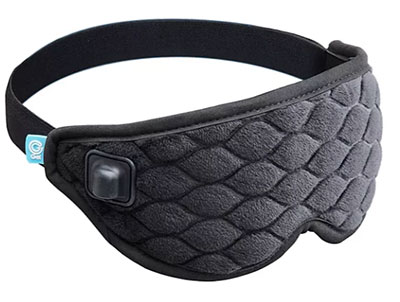
Kohl’s, HoMedics Gel Eye Mask, $44.99 $34.99
Nordstrom Rack, Brushed PJ Set, $34.97
8. Stay Social
You don’t need a doctor or specialist to tell you that there is definitely a correlation between social activities and social isolation. Finding ways to stay social during increased times of isolation is key during the winter months. Whether that means getting outside with friends, or even hopping on a FaceTime call with a friend who may live away, having some kind of social interaction can help boost your mood.
9. Brighten Up Your Environment
With many more of us working from home these days, having a bright, welcoming environment is key, especially during this time of year. A helpful tip to manage the light you’re exposed to during the day is keeping the blinds open to let in as much natural light as you can. And if you’re working remotely, try opting for a workspace that is near a source of natural light (if possible!). Indoor lighting has a nasty tendency to negatively affect SAD symptoms because it’s much dimmer than the natural sunlight we want and need.
10. Talk to Your Doctor
When all else fails, it may be time to consider chatting with your doctor about other options. Whether that be medication or possibly speaking with a specialist/ therapist about what and how you’re feeling. Sometimes, we all need a little extra help and that’s ok.
Feeling inspired to be a better you this year? Check out these self-help books to achieve all your 2023 goals!
The post 10 Tips to Survive the Gloomiest Time of Year appeared first on Cartageous.



